Indoor plants with red flowers
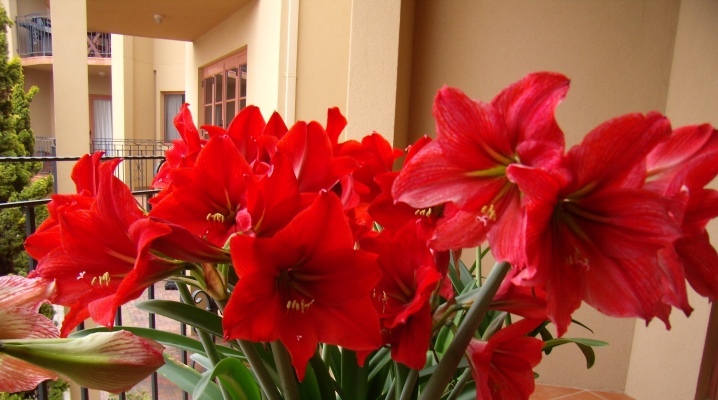
Many growers prefer plants with red flowers. All shades of red look contrasting and bright, symbolizing love and fullness of life. In this article, you will get acquainted with the most popular varieties of indoor plants with red flowers.
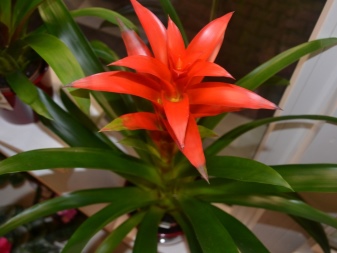
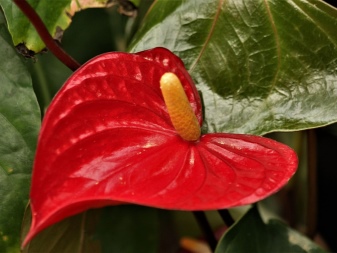
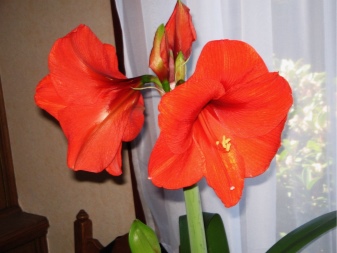
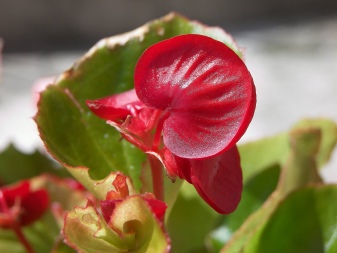
Species overview
Among indoor plants with red buds at home, you can find more than 100 separate varieties. Below are descriptions of only the most popular flowers with red, scarlet or burgundy inflorescences, and also briefly outlined the features of caring for each of these plants.
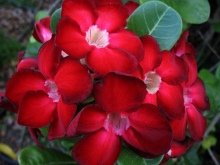
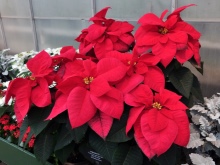
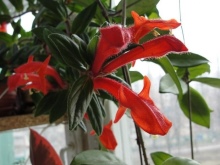
Azalea
Another name for this flower is rhododendron. Azaleas are popular not only for their red double flowers, but also for their dark green leaves with a beautiful glossy sheen.
Azalea is an evergreen shrub plant of the Rhododendron family. The main distinguishing feature is the lush and double inflorescences, which outwardly resemble geranium flowers. Azalea leaves are relatively small, oval, glossy on the outside and matte on the inside. The azalea bloom period is winter, due to which this flower is appreciated by many growers.
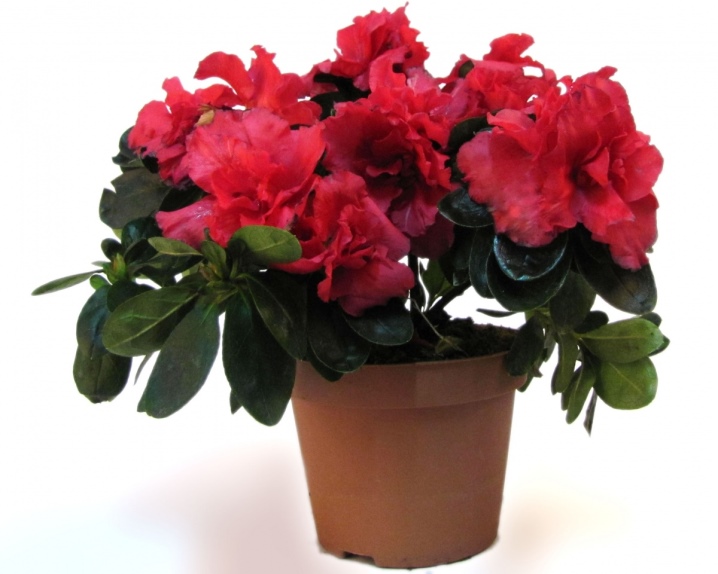
In caring for an azalea, you need to know a lot of subtleties. It is best to place the flower in partial shade or diffused light. Azaleas are very moisture-loving, do not tolerate dry air and drying out of the soil.
It is best to select acidic substrates for cultivation with a lot of peat. Loosening of the soil should be avoided - the roots of the flower are very fragile.
The optimum temperature for flowering and growth of azaleas is +20 degrees, in winter - at least +12. Plants are transplanted annually (young), but old ones are transplanted no more than 1 time in 3 years. Azaleas love mineral fertilizers in the form of superphosphates; in the spring and summer months, top dressing is applied to the soil once a week.
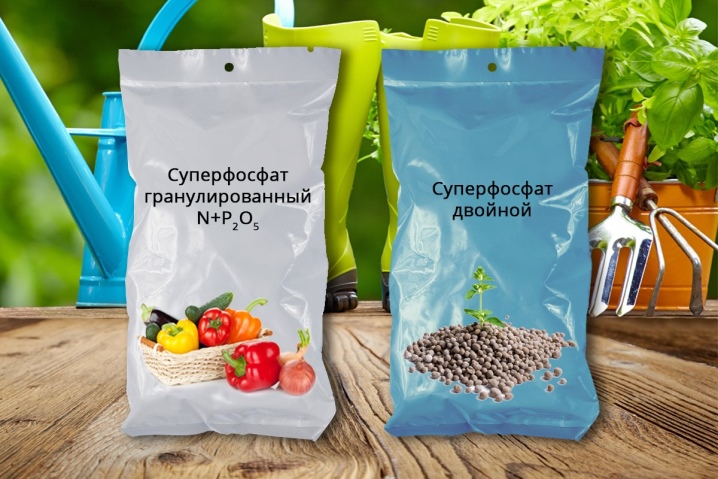
Anthurium
Among indoor plants, anthurium cannot be confused with something else. The unique appearance of this flower gave it the second popular name - "male happiness". It is believed that anthurium is able to give a man masculinity, strengthen strength, and also bring success.
Anthurium belongs to evergreen plants from the Aronnikovye family. The name of the flower is a combination of two ancient Greek words - "flower" and "tail". This is a medium-sized plant (up to 1.2 meters in height) with thick stems on which fleshy leaves are heart-shaped, whole, spatulate, multi-pinnate and complexly dissected.



The active cultivation of anthurium is due not only to a unique inflorescence surrounded by a red blanket, but also by leaves of a light green color with a sheen of gloss or velvet. Externally, the plants look like popular calla flowers, but the latter are white. The following varieties of anthurium have red flowers: "Turenza", "Dakota", "Schercera", "Sierra Magic", "Bugatti Veyron".

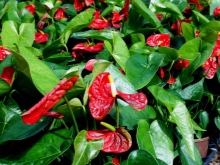
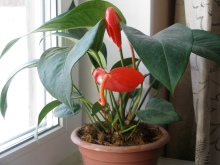
With regard to leaving, anthurium is a rather finicky flower. In lighting, he prefers conditions of partial shade or diffused light, very poorly tolerates drafts and stagnant water, should be watered only with warm water.
Besides, regularly it needs to be sprayed, as dust regularly accumulates on its fleshy leaves... Also, the plant needs a transplant (once a year for young flowers). For active growth and flowering, anthurium requires fertile and loose soil, which should include sand, peat, leafy soil, coal, moss and cones.
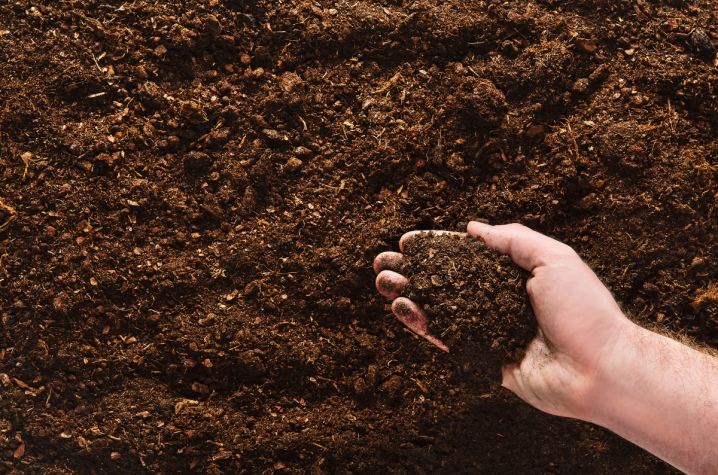
Balsam
This is one of the most popular indoor flowers, which has received a huge number of names among the people - "touchy", "light" and even Vanka wet. The latter name comes from the droplets of moisture that form on the tips of balsam leaves in high humidity conditions.
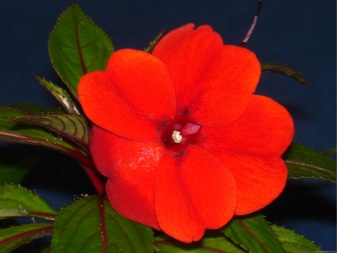
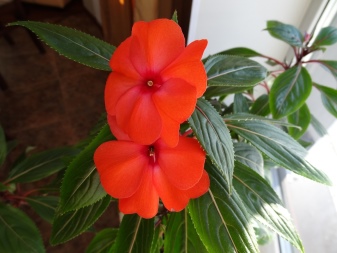
The genus Balsamin has more than 500 varieties. These are herbaceous annuals or perennials from the Balsamic family. Balsams are low-growing plants (up to 20 cm in height) with fleshy leaves of green, reddish or bronze color. Balsam inflorescences, in addition to red, can be pinkish, white and orange with characteristic blotches or stripes. At home, the flowering of balsam does not stop all year round, the flowers are small, but numerous, reminiscent of roses and carnations. Among the varieties with red flowers can be distinguished "Scarlett", "Hocker", "Waller", "Niamey", "New Guinea", "Terry", "Tom Tamb".

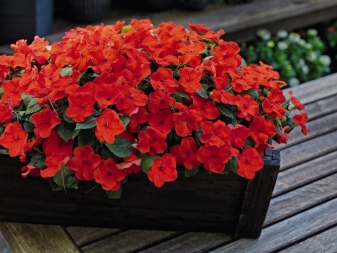
In care, balsams are undemanding. The plant can grow in all lighting conditions except full shade. With respect to temperature, the flower can bloom calmly both at +12 and +26 degrees.
The only moment is the flower loves water very much, and therefore you need to ensure that the soil in the near-stem circle of the flower is always moist... You need to feed balsam only during the flowering period. Any fertilizer for flowering plants with a low nitrogen content is suitable for this. The balsamic soil does not have strict requirements, it only needs to be nutritious and loose.
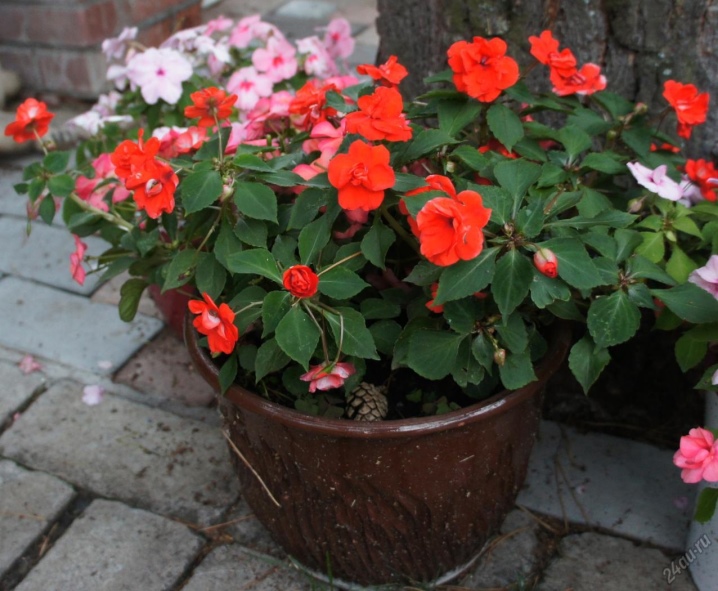
Vallota
Vallota is one of the brightest representatives of the Amaryllis family. A distinctive feature of this bulbous plant is considered to be long, erect and narrow leaves, which can change their color - the reddish color at the base gradually passes to the rich green tips.
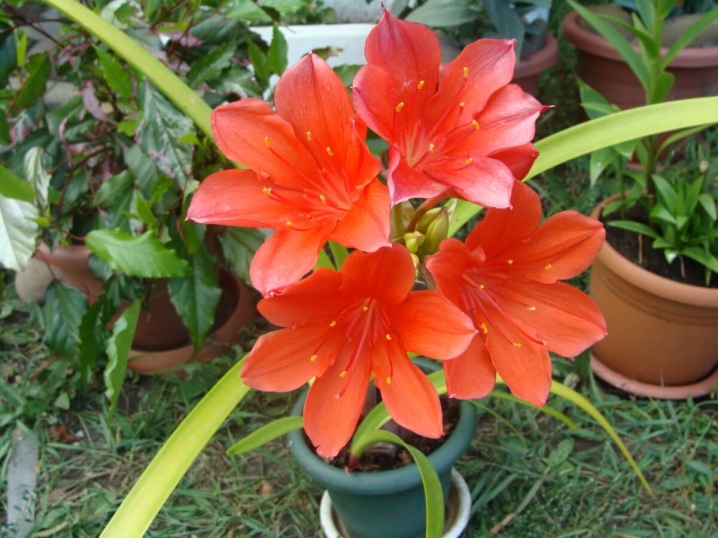
Long peduncles of vallota during the flowering period can give up to 3-4 buds in the form of a lily or a bell, each of which can be up to 10 cm in diameter. Vallotta blooms twice a year, but usually lasts from August to September.
As for leaving, the wallot is hardly a demanding flower. She feels best on loggias and balconies on the south or east side of the apartment, but does not tolerate direct sunlight.
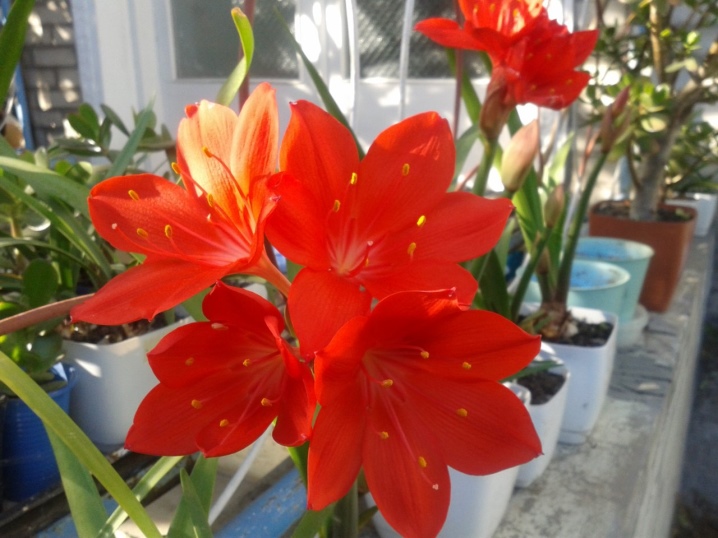
The optimum temperature for growing a flower is 22 degrees in the summer season, 16 - in the winter. Watering the vallot is often not worth it, the flower does not tolerate stagnant moisture, during the dormant period, watering completely stops.
There are some nuances regarding feeding - organic matter should be alternated with mineral fertilizers and applied to the soil to the flower no more than 1 time in 2 weeks during the period of active growth.
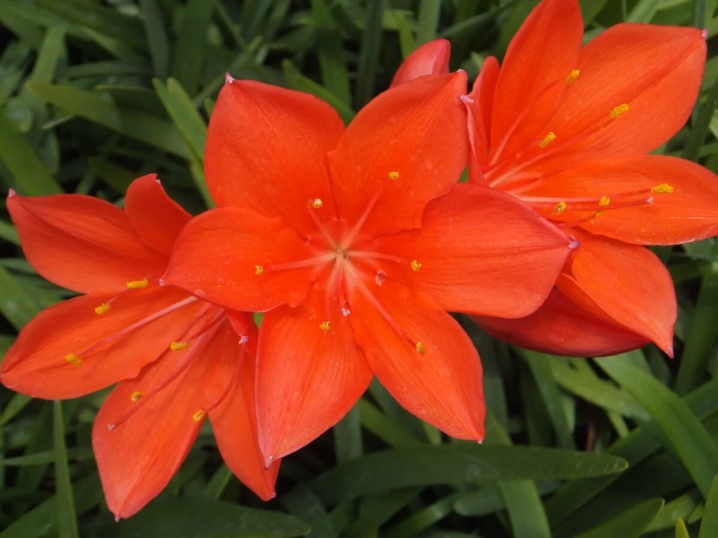
Hibiscus
A genus of shrubby plants from the Malvovye family, the name in everyday life is "Chinese rose". It includes a huge number of varieties, including several Dutch species, each of which is distinguished by a red or pinkish color.
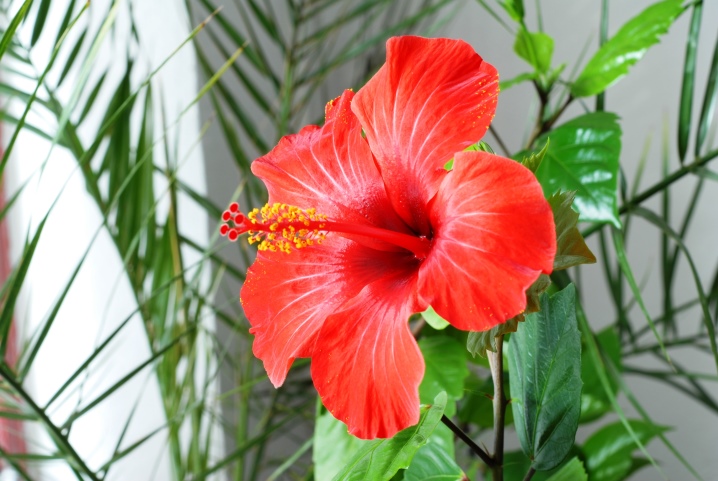
Externally, hibiscus is presented in the form of a shrub, which in its natural environment can reach a height of 3 meters. A distinctive feature of the flower is a voluminous crown, which consists of large dark green leaves (with white blotches) in the shape of a trefoil. Each of the leaves is attached to the stem of the plant (covered with bark in adult flowers) with long petioles. Hibiscus inflorescences are voluminous, usually consisting of 5 petals.
Hibiscus is relatively undemanding to care for - all growing conditions are standard for all indoor plants.
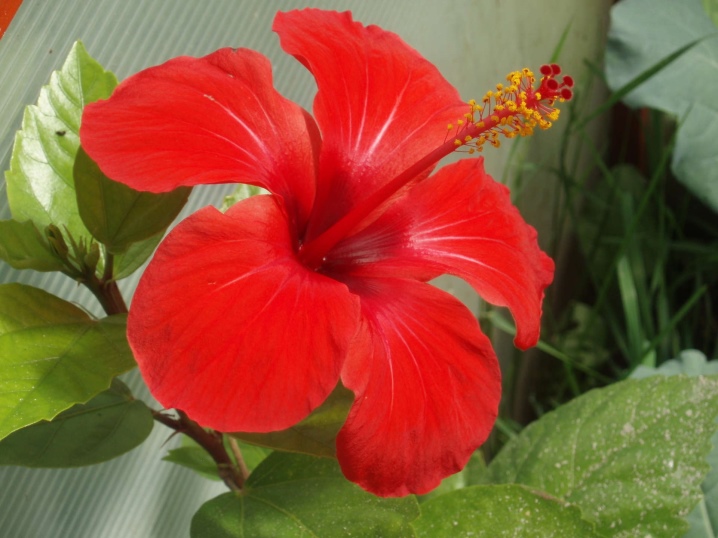
Hibiscus is tolerant of drafts, does not particularly suffer with occasional watering and is good for partial shade and diffused light. The only subtlety in growing a flower is annual pruning, which is necessary for the formation of the crown and new inflorescences. You need to fertilize hibiscus exclusively in the spring using complex fertilizers with potassium and phosphorus, but without nitrogen.The soil for hibiscus should consist of peat, sand and ordinary meadow soil.
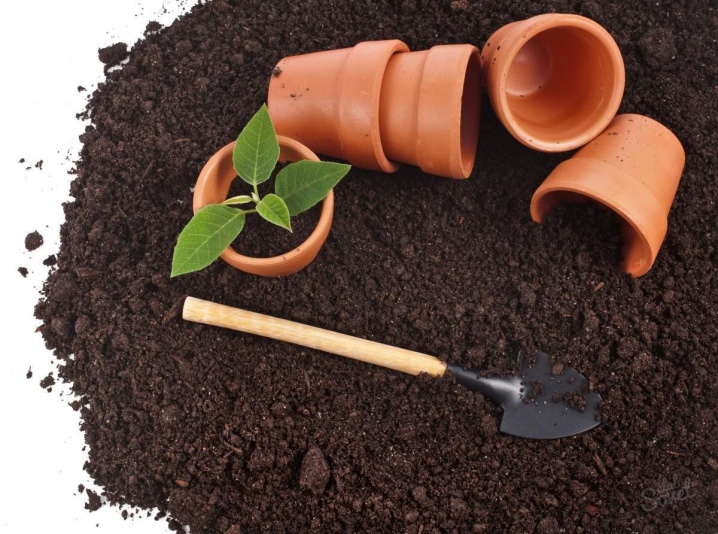
Hippeastrum
Hippeastrum is a perennial bulbous flower that can grow up to 0.7 m in height. It is a prominent representative of the Amaryllidaceae family and includes more than 90 varieties. In nature, hippeastrum can be found in the subtropical and tropical regions of America.
The plant is popular both for its double and voluminous flowers (each of which can grow up to 20 cm in diameter in favorable conditions), and long light green leaves with a characteristic glossy sheen. The flower stalks of the plant are hollow, can include up to 7 buds. Indoor varieties are distinguished by smaller flowers that may not smell at all. It blooms twice a year.
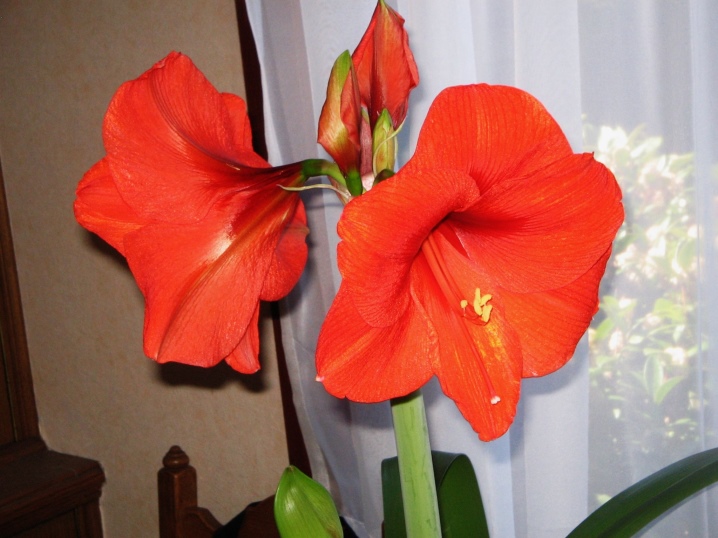
Hippeastrum is not particularly picky, it tolerates both direct sunlight and partial shade well.
In the summer months it feels good at temperatures up to 25 degrees, in the winter the temperature should not be more than +13. The flower is bad for waterlogged soil.
Fertilizers (exclusively mineral) are recommended to be applied only during the period of active growth; in winter, top dressing is prohibited. With the onset of cold weather, the flower withers, after which it must be placed in a darkened place with a low level of humidity until February.
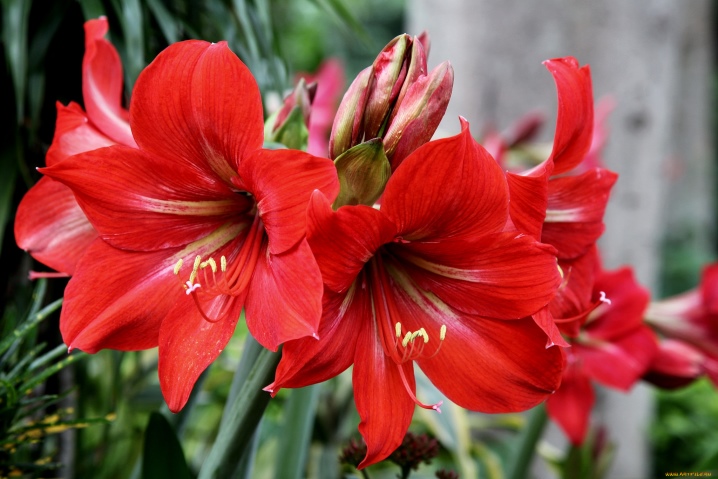
Indoor pomegranate
Pomegranate is rarely grown at home, but it can be perfect for the role of an ornamental plant. Under favorable growing conditions and conscientious care, it will delight not only with abundant flowering, but also with fruits.
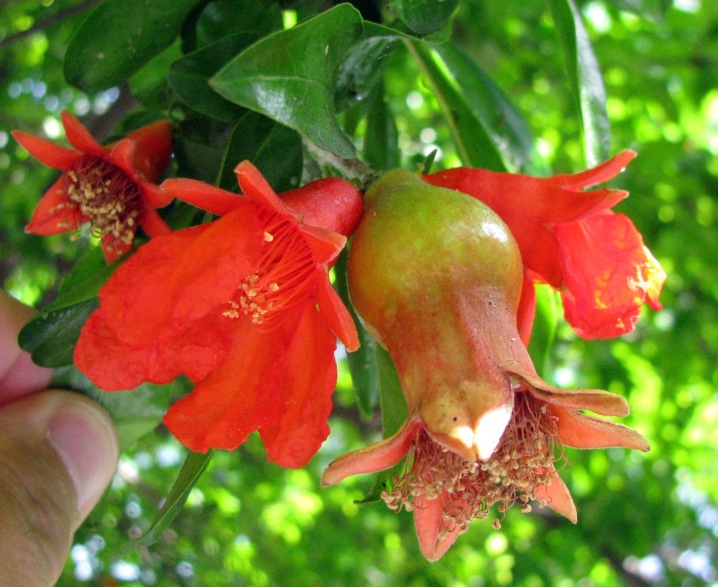
Indoor varieties of pomegranate are dwarf hybrids (up to 1 meter in height), the most popular of which are Ruby, Baby and Nana. Externally, indoor pomegranate is a miniature tree with a large number of thin twigs, each of which is covered with thin thorns. The leaves are small, light green, with pointed tips. Terry and self-pollinated pomegranate flowers have a unique shape in the form of a water lily; there can be up to 20-30 of them on a tree. The flowering period lasts over 3 months and begins in April.
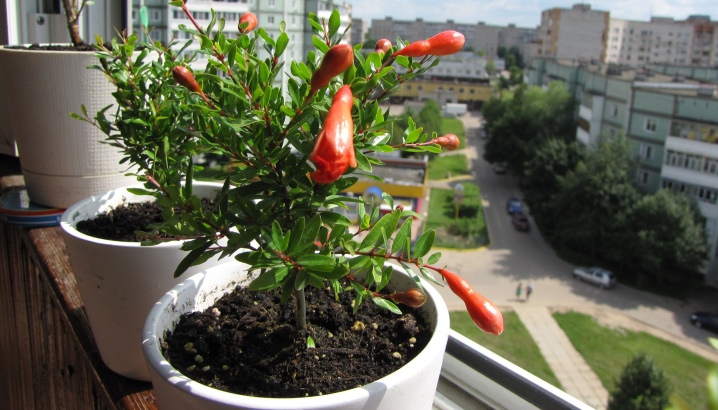
Care
Pomegranate can hardly be called picky plant. For example, an exceptionally wide pot and fertile clay soil are suitable for growing it. Besides, you need to grow pomegranates from the south side of the apartment, preferably on a loggia or balcony.
Young pomegranates (up to 5 years old) are transplanted into new, more nutritious soil every year. Regarding top dressing, pomegranates are very fond of complex mineral fertilizers - options for indoor plants are suitable.
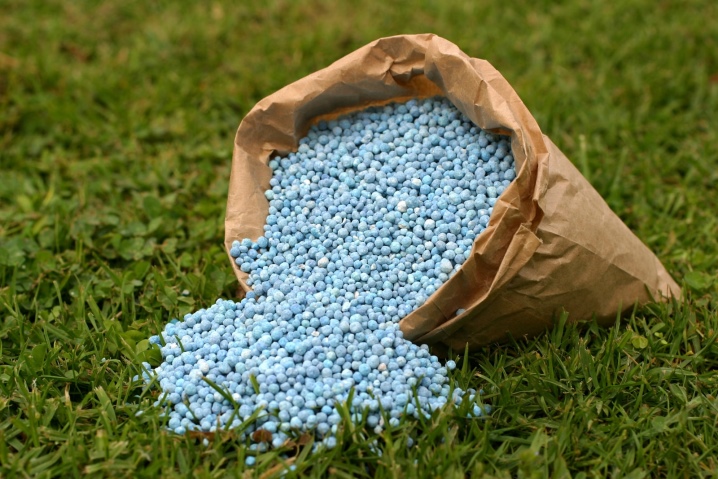
The feeding itself is usually carried out only during the period of active growth and flowering - 2 times a month. Watering a room pomegranate should be rare, but very plentiful - it is worth watering as soon as the soil in the pomegranate pot dries up by 1.5-2 cm. Also, the pomegranate loves good lighting and calmly tolerates summer heat up to 30 degrees.

Gusmania
Guzmania is one of the most picky, but very beautiful plants, which, thanks to its rich leaves and reddish buds, can compete with many garden crops.
Gusmania is an epiphyte from the Bromeliad family; it grows on trees in its natural environment. The key features of the plant are a high rosette formed by elongated and elongated leaves, compactly collected at the base of the plant. In the center of the rosette there is an arrow-shaped peduncle - they are large in gusmania, they consist of a large number of small leaves with contrasting bracts at the top. Taking into account the height of the peduncle, gusmania can grow up to 0.8 m in height.

Taking care of this flower is quite simple. Gusmania prefers window sills on the south side of the house, but does not tolerate direct sunlight.
The optimum growing temperature is from +16 to +24 degrees. Water the plant often and try to get water into the rosettes of the leaves (in case of stagnation, excess moisture must be removed).Top dressing in the ground for gusmania is applied every month during the period of active growth and flowering.
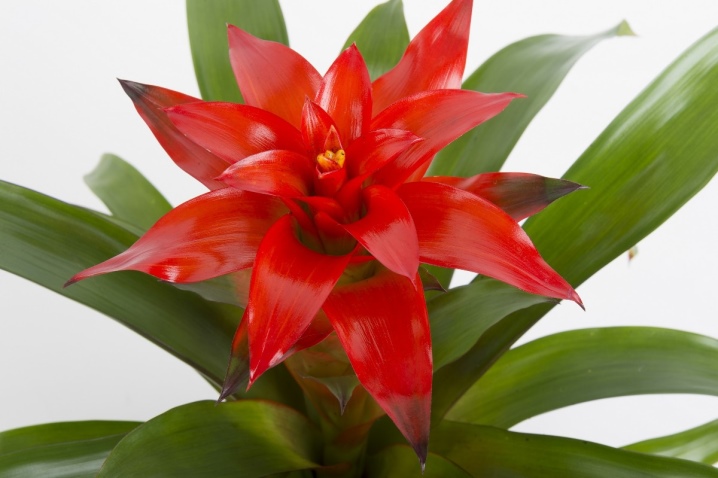
Diplomas
Diplomacy came to the territory of our country from the subtropics of America, where this flower can be found growing in the form of a small bush or liana.
Dipladenia belongs to the Kutrovy family, the genus of the flower has more than 50 separate varieties, however, only about 4 species are grown by flower growers. The excellent dipladenia is distinguished by its large red flowers. The leaf plates of the flower are light green, with a characteristic glossy sheen. A single plant can contain more than 10 flowers, each of which exudes a pleasant but strong aroma. The plant has a fast growth rate and blooms the next year after planting. A distinctive feature is the long flowering period, which can last more than six months.
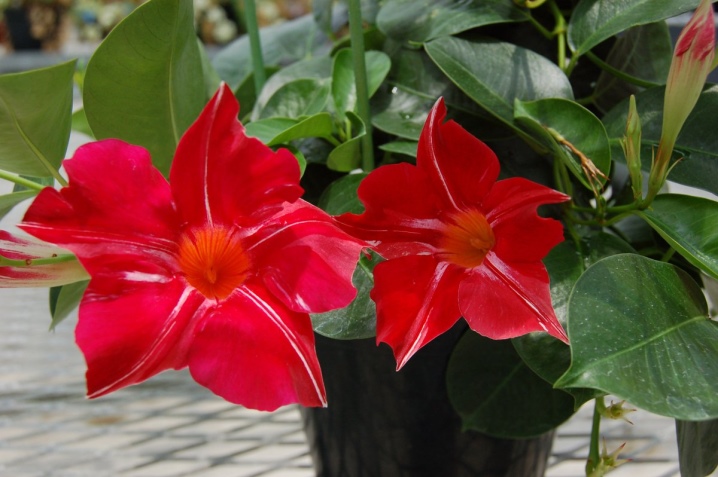
With regard to leaving, diplophenia is a rather capricious flower. It requires growing in conditions of consistently high humidity - this is ensured by keeping the flower in wide pallets with damp pebbles. Before the period of active growth, diplopia is fertilized with nitrogen fertilizers, during flowering itself - with mineral (phosphorus-potassium) fertilizers. Fertilizers should be used exclusively in liquid form. The soil for this flower should consist of sand, peat and humus; for better looseness, perlite or expanded clay is added to it.
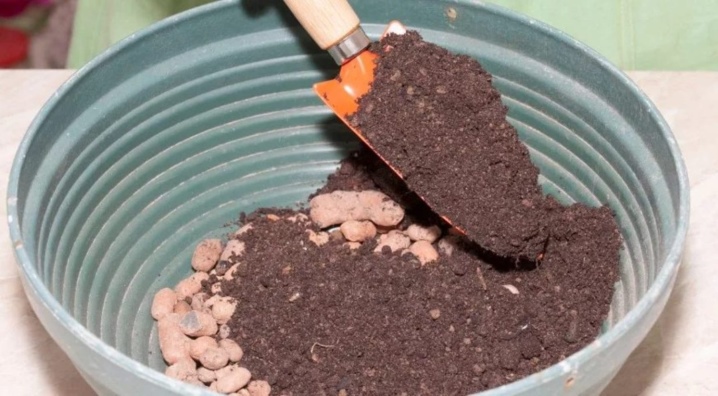
Coleria
This flower also came to Russia from America, but from the tropics. Despite the relatively simple growing conditions, it is not in great demand among florists.
Coleria refers to perennial herbaceous shrubs or dwarf shrubs from the Gesneriaceae family.
External features: pubescent stems with semicircular leaves (which are also covered with villi), the color of the latter can vary from light green to olive shades. Coleria flowers have the shape of an asymmetrical bell with a long corolla. One peduncle of a coleria can include up to 3 buds, each flower, taking into account the corolla, can reach a length of 6 cm. Popular varieties and types of coleria with red buds: Red Ryder, Bogot, Majestic, Hairy.

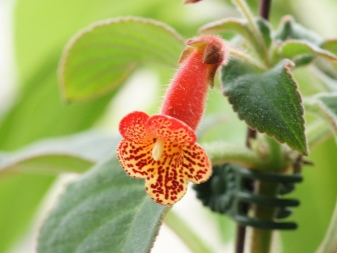
In the summer and spring, koleriya calmly tolerates ordinary room conditions, but in winter it should be kept in a room with a temperature of at least +17 degrees without drafts. Coleria prefers to grow in well-lit places, but does not tolerate direct sunlight. Likes moderate watering, but also has a negative attitude towards drying out the soil. For infrequent fertilizing (twice a month during the active growth period), conventional fertilizers for flowering plants are selected. Prone to various types of rot.

Columbus
Another epiphyte, but already from Latin America, prefers to grow on trees in natural conditions. At home, it is grown as an ampelous plant, as it grows up, it begins to hang from containers.
Columnea belongs to flowering plants from the Gesneriaceae family. The genus of this plant has more than 200 varieties around the world. Distinctive features are bright, but small flowers of an elongated shape, as well as thin shoots, covered in abundance with small leaf plates (pubescent or glossy). It is characterized by an atypical flowering period that begins with the onset of winter. Species with purple and burgundy inflorescences: Raymonda, Banks, Allen, Krakatoa.
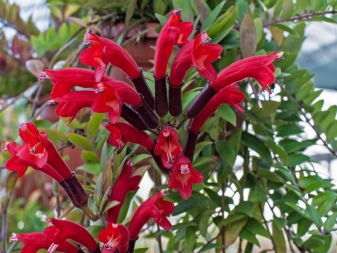

This is one of the most picky flowers to care for; when growing a columnea, you need to avoid only two points: drafts and sunlight falling on the flower.
During the growing season, it needs an increased amount of moisture, but in the summer season it can withstand heat up to 30 degrees. Also, the flower must be cut off annually immediately after flowering. The roots of the flower are weak, and therefore the substrate should consist of peat, sand, turf and charcoal.
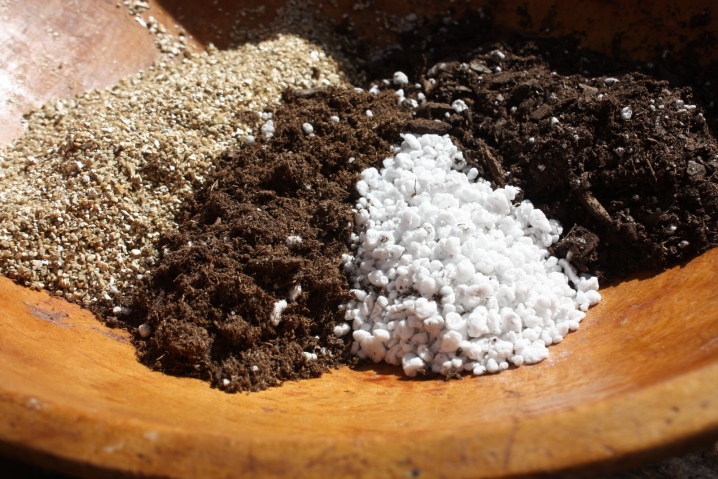
Leey
This is far from the most common flower, and you can find it in the collections of only the most sophisticated florists.
Leia is a shrub plant of the Vitaceae family and includes more than 80 varieties. Unlike other plants on our list, Leia is famous not so much for its inflorescences as for its unusual decorative leaves, which, in addition to their large shape, glossy tint and corrugated edges, can be painted in green, bronze, burgundy, purple and purple tones. It is difficult to achieve flowering at home. The inflorescences are dense umbrellas that can include both small flowers (pinkish, orange or burgundy), and the fruits themselves in the form of small berries. Lei bush with proper care can grow up to 1.1 meters in height.
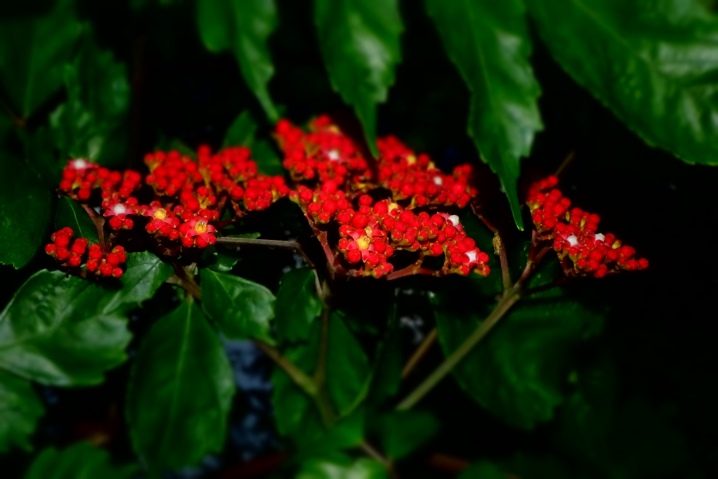
Caring for this flower is a rather painstaking business. In the case of lighting, it all depends on the color of the leaves - the lighter they are, the more light they need. In order for the plant to branch better, you need to regularly pinch the tips of the shoots. For cultivation, only nutrient soil of a neutral or slightly acidic type is suitable. Watering should be regular and plentiful - do not allow the soil to completely dry out at the flower stem; growers also advise to regularly increase the air humidity near the plant using a sprayer.
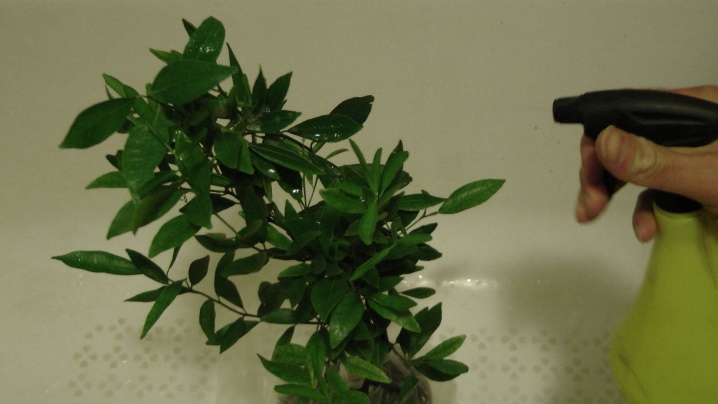
Spurge
Euphorbia is one of the most numerous genera in the plant kingdom. Modern scientists still have not accurately determined the number of varieties of this plant, since it includes succulents, shrubs and even perennial grasses. At the moment, more than 2000 varieties of milkweed are known.

A distinctive feature of all its types is the presence of the so-called milky juice (poisonous), which is contained in the shoots of the plant.
There are over 20 varieties of milkweed with red flowers, however, the most popular is the most beautiful euphorbia or poinsettia. This is a short plant (up to 45 cm in height), it is distinguished by bright red and even purple leaves at the top of the plant with a golden mean.
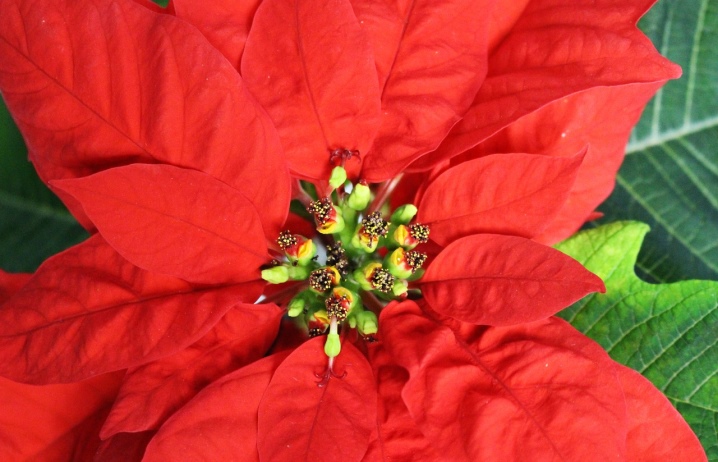
It is quite easy to grow this variety of milkweed. - the flower is patient with high and low temperatures and can withstand up to +13 degrees even during the flowering period. A distinctive feature is the obligatory presence of good lighting throughout the winter period. In addition, the species needs regular watering and spraying.

What to choose?
All the flowers described above are beautiful and exceptional in their own way, however, there are several things to consider when choosing them.
- Care. The most fastidious flowers can be considered anthurium, pomegranate, leia and dipoleania, but the simplest cultivation is balsam, gusmania, euphorbia and columnea.
- Security. Among the flowers described above, there are plants that cannot be grown in apartments with children and pets. These are, first of all, vallot (all parts of the plant are poisonous), small tea (the juice of which can cause burns to the mucous membranes of the eyes and nose), gusmania (pollen is an extremely strong allergen), as well as azalea (leaves with a toxic glycoside, which causes severe poisoning).
- If you prefer not only beautiful, but also unusual red flowers, then stop at the indoor pomegranate, which will give you delicious fruits, or on the columneas and azaleas, which will delight you with their flowering throughout the winter.

Beautiful examples
Below you can find examples of the use of some varieties of plants with red flowers in the interior.
- Pink and red azalea flowers are ideal for the living room. The plant looks fresh and can become a real compositional center of the room in winter.
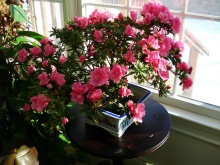
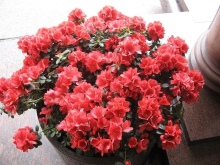
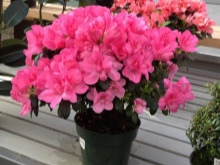
- A picky and graceful balsam will look great in an ensemble with other bright indoor plants.
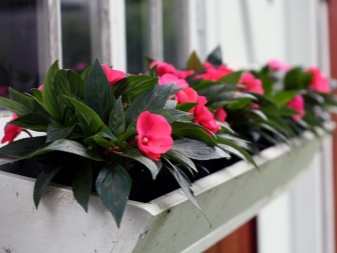
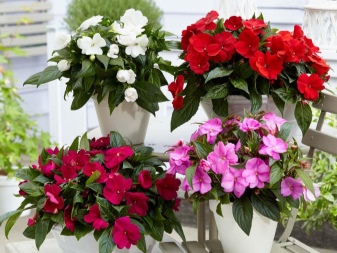
- Bright and lush flowers of the vallotta are a symbol of passion and love. These flowers will easily become the brightest accent in the room and will attract enthusiastic looks.
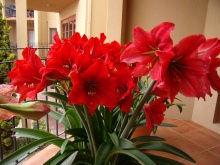
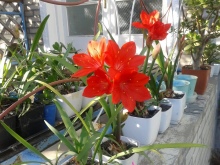
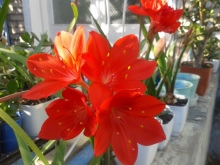
- Indoor pomegranate is an option for ambitious flower growers who want to get an exotic and healthy plant at the same time.
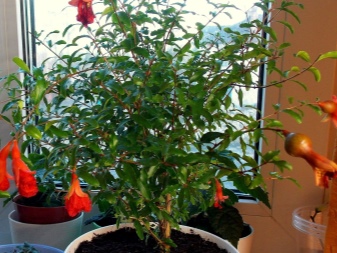
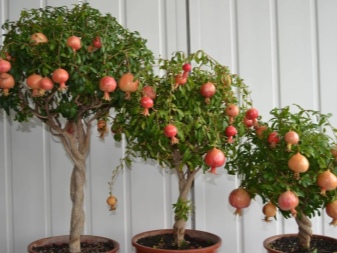
How to care for anthurium, see below.































The comment was sent successfully.